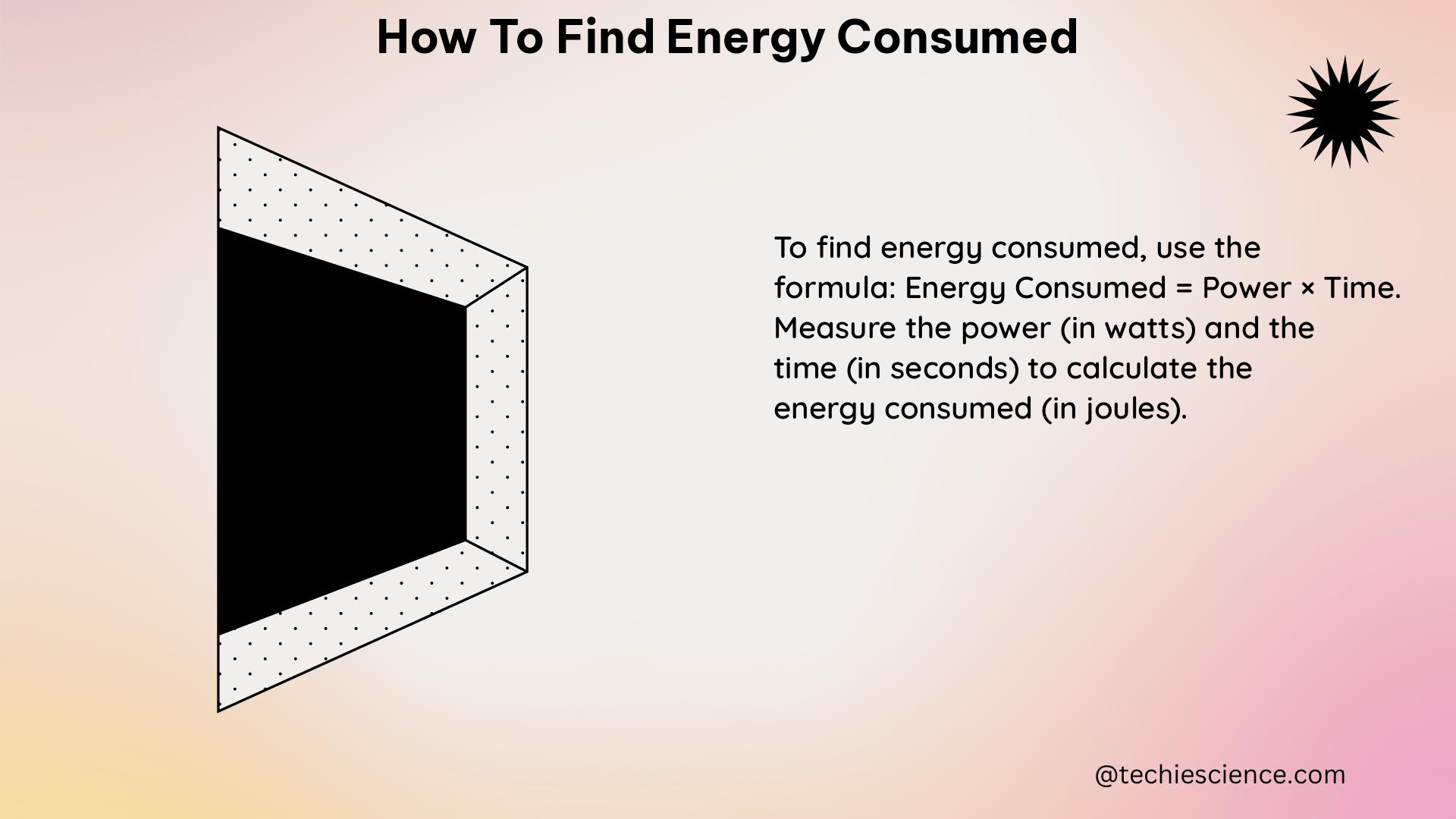Summary
Finding the energy consumed is a crucial step in understanding and optimizing energy usage. This comprehensive guide provides a detailed, step-by-step approach for physics students to measure, analyze, and manage their energy consumption effectively. From collecting data from various sources to setting energy goals and tracking progress, this article covers the essential elements of energy consumption analysis, empowering students to make informed decisions and achieve their energy efficiency objectives.
Measuring Energy Consumption

Collecting Energy Data
The first step in finding the energy consumed is to gather data from various sources. This includes:
- Utility Bills: Collect and analyze your electricity, gas, and other utility bills to understand your historical energy consumption patterns.
- Meters and Sensors: Install energy meters or sensors to monitor real-time energy usage in your facility, equipment, or processes.
- Audits and Assessments: Conduct energy audits or assessments to gather detailed information about your energy-consuming systems and identify potential areas for improvement.
- Reports and Databases: Refer to industry reports, benchmarking data, or government databases to compare your energy performance with industry standards or best practices.
Organizing and Visualizing Energy Data
Once you have collected the energy data, it is essential to organize and visualize it to gain meaningful insights. Utilize tools such as:
- Spreadsheets: Use Excel or Google Sheets to create tables, charts, and graphs to analyze your energy data.
- Energy Management Software: Invest in specialized energy management software or platforms to centralize your data, generate reports, and create interactive dashboards.
- Data Visualization Tools: Leverage data visualization tools like Tableau, Power BI, or Grafana to create intuitive and informative visualizations of your energy data.
Calculating Energy Baseline and Benchmark
To understand your energy performance, you need to establish two key metrics:
- Energy Baseline: Determine the average or typical energy consumption or intensity of your facility or process over a specific period, which will serve as a reference point for comparison.
- Energy Benchmark: Identify the best practice or industry average energy performance for your type of facility or process, which will help you set realistic targets for improvement.
Identifying Energy Opportunities and Gaps
Comparing Baseline and Benchmark
Compare your energy baseline and benchmark to identify any discrepancies or deviations. This will help you pinpoint areas where you can potentially improve your energy efficiency.
Analyzing Energy Data Patterns
Delve deeper into your energy data to uncover any patterns, trends, or anomalies. Use tools like charts, graphs, and heat maps to visualize and highlight these insights.
Listing Energy Opportunities and Gaps
Based on your data analysis, create a list of your energy opportunities, which are the potential savings or efficiencies you can achieve through specific measures or changes. Additionally, identify your energy gaps, which are the barriers or challenges that prevent you from reaching your desired performance.
Setting Energy Metrics and Targets
Selecting Key Performance Indicators (KPIs)
Choose the appropriate energy-related KPIs that align with your objectives and reflect your energy performance. Common KPIs include:
– Energy Consumption (kWh, therms, etc.)
– Energy Intensity (kWh/sq ft, kWh/unit of production, etc.)
– Energy Cost ($/kWh, $/therm, etc.)
– Energy Savings (kWh saved, % reduction, etc.)
– Carbon Emissions (tons of CO2 equivalent)
Establishing SMART Energy Targets
Set specific, measurable, achievable, relevant, and time-bound (SMART) energy targets to track your progress and drive continuous improvement. Examples of SMART energy targets include:
– Reduce energy consumption by 15% within the next 2 years
– Achieve an energy intensity of 50 kWh/sq ft by the end of the fiscal year
– Increase the share of renewable energy in the energy mix by 25% in the next 3 years
Tracking and Evaluating Energy Performance
Collecting and Updating Energy Data
Regularly collect and update your energy data to ensure you have the most accurate and up-to-date information. Automate data collection processes whenever possible to streamline the process.
Monitoring and Verifying Progress
Use dashboards, reports, and alerts to monitor your energy performance and verify if you are on track to meet your targets. Analyze any deviations or discrepancies and investigate the underlying causes.
Calculating Energy Savings and Impacts
Quantify your energy savings, efficiencies, and other impacts by comparing your current performance with your baseline and targets. Utilize formulas and calculations to accurately measure your progress.
Optimizing Energy Actions and Strategies
Reviewing and Analyzing Data and Feedback
Carefully review and analyze your energy data, as well as any feedback or insights you have gathered, to identify strengths, weaknesses, and areas for improvement.
Adjusting Energy Actions and Strategies
Based on your data analysis and findings, adjust and optimize your energy actions and strategies. This may involve modifying, adding, or removing certain measures or changes to enhance your performance and overcome any challenges.
Revising Energy Metrics and Targets
If necessary, revise, update, or reset your energy metrics and targets to ensure they align with your current situation, priorities, and aspirations.
By following this comprehensive guide, physics students can effectively measure, analyze, and manage their energy consumption, leading to improved energy efficiency, cost savings, and environmental sustainability.
References:
- Energy Usage Intensity: A Comprehensive Guide
- SMART Goals for Energy Management
- What’s the Best Way to Set Achievable Energy Goals?
- Foundational Step 2.9: Establish Energy Baseline and Benchmark
- ISO 50001 Step 2.4: Establish Energy Baseline

The lambdageeks.com Core SME Team is a group of experienced subject matter experts from diverse scientific and technical fields including Physics, Chemistry, Technology,Electronics & Electrical Engineering, Automotive, Mechanical Engineering. Our team collaborates to create high-quality, well-researched articles on a wide range of science and technology topics for the lambdageeks.com website.
All Our Senior SME are having more than 7 Years of experience in the respective fields . They are either Working Industry Professionals or assocaited With different Universities. Refer Our Authors Page to get to know About our Core SMEs.